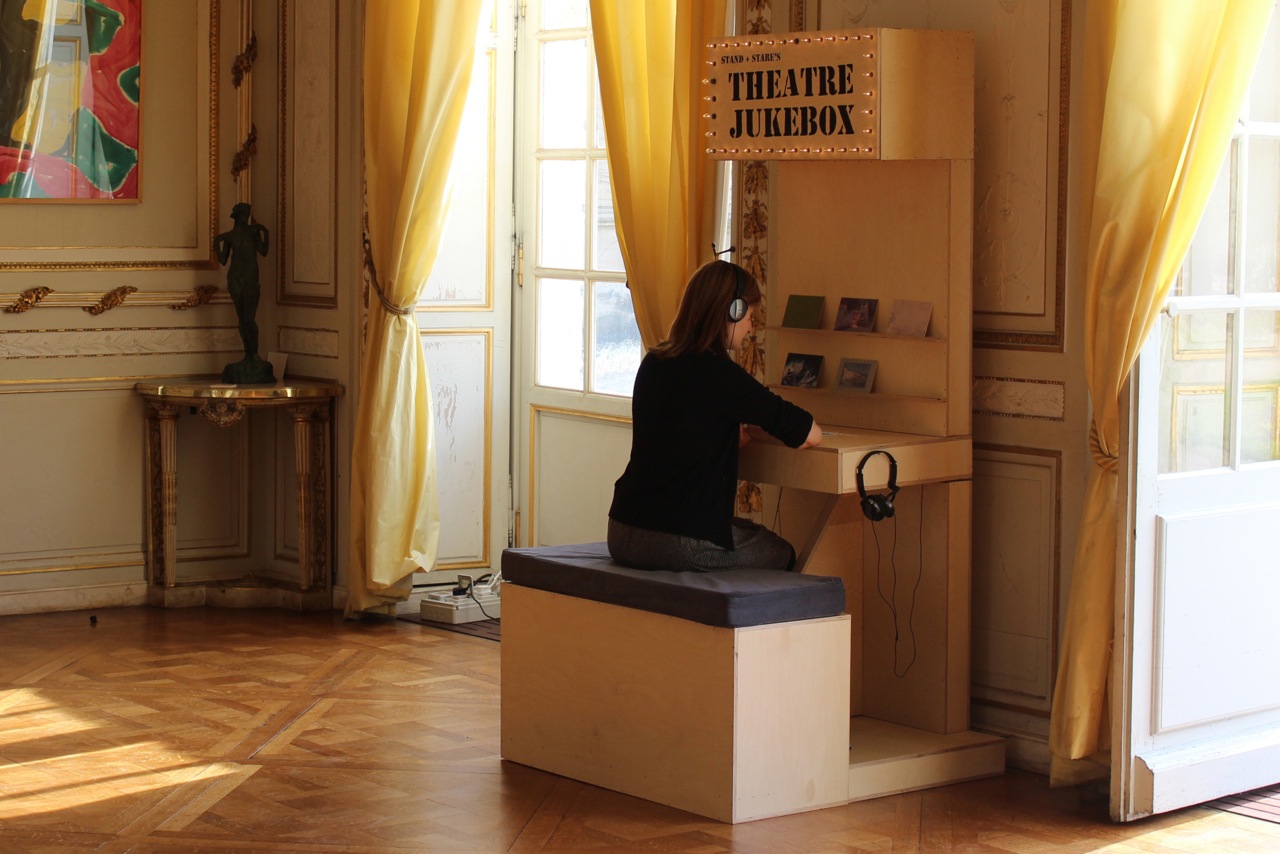
Theatre Jukebox by Stand and Stare
Outside the box
Digital may be the first word to spring to mind when you think of Watershed, but it doesn’t come close to describing all that they do. Clare Reddington reflects on art-form silos and the pressure to reduce your work to a tick in a box on a funding form.
After last week’s Arts Council England funding announcement, I took a look back over Watershed’s National Portfolio application, and what jumped out at me was how few times we use the word digital. This may come as a surprise to those who know our organisation well, it was a little bit of a surprise to us too. However, it has less to do with a move away from technology, and more to do with our struggle with boxes and labels.
When we set up Watershed’s Pervasive Media Studio, a collaborative research lab that brings together many different types of people to explore and test new ideas, one of the things that made it unique was its open ethos – we don’t distinguish between artforms, or between commercial and cultural ideas. The work we’ve done ranges from helping artists Stand and Stare to create RFID-triggered installations for museums and venues, to supporting start-up companies like nu desine, who benefit from co-locating with artists. Over the past three years we have also been part of the AHRC-funded REACT hub, which funds collaborations between academics and creatives around various themes, from publishing to internet of things and, at the moment, play. At the beginning of each themed project we ask the teams to present their ideas and often get two presentations from each team. The magical moment is four weeks later, when they have shaken off what they perceive to be their distinct roles, and they present together – language, theory and concepts fusing in new and exciting ways.
Our role then is to steep ourselves in new opportunities, and to assimilate and translate these into concepts that are credible, viable and meaningful to partners, participants and audiences
The very point of our work is to explore new forms and genres. But this has resulted, time and time again, in a pause at the art form box of a funding application, unsure which to tick. So what do we do: do we accept the inevitability of these pre-existing labels and work around them, or find new ways to describe what we do? Few of the artists we work with self-identify with art-form silos, their portfolio careers pay the bills, and an entrepreneurial attitude allows them to create work in new ways, for new markets. Art does not exist in a vacuum, nor does it flourish under constraint. It touches every part of our lives. As Charles Leadbeater said, creativity, culture and art are central to “how we make our livings, take our leisure, enjoy ourselves, express our identities, bind together our communities, explore our history and speculate about the future”.
This is increasingly true of technology too. Our interest then, is in what art and technology can do, rather than labelling what is created. Our efforts are spent understanding the impact a new technology might have on culture and society, and where art and creativity might make a difference. When I read up on big data or internet of things, I am looking to understand where Watershed might have a meaningful role – either in designing human-centred approaches to new technology (like Objects Sandbox), or using technology to enable or inspire brilliant people to realise new ideas (like Being There).
Whilst we actively try to avoid using or creating silos, the world of emergent technologies and art forms is a hazy space, and you have to give people something to hold on to. Our role then is to steep ourselves in new opportunities, and to assimilate and translate these into concepts that are credible, viable and meaningful to partners, participants and audiences. This has rung particularly true with Playable City, where the act of naming and describing a playful alternative to the Smart City agenda has opened up partnerships with artists, industry and academia in the UK and beyond.
By first concentrating on the why, rather than the how (or even how much), when we begin a new project, we create a stronger offer for potential collaborators. And by taking the time to think through and understand a new area of work, even if we fall a little flat during the journey, we always deliver something useful along the way.
Last week I became Watershed’s first Creative Director. After seven years here I am well aware that constant curiosity and translation can be as exhausting as it is rewarding. It requires a special kind of resilience, and an organisation full of willing adventurers. But concentrating on ‘why’ allows us to remain relevant and unique. So, the emphasis for Watershed’s application to the Arts Council was not ‘digital’, but a continued commitment to change – joining up the parts of our organisation which may sometimes appear disparate, and exploiting the unexpected synergies that arise.
This year our projects include a cross-cutting SciFi season, an expanded Playable City programme and more from Rife – our youth-led online platform which covers everything from cat gifs to feminism. Which box will we tick when we come to report on these? I really don’t know. But I expect we will just have to tick a few.
Clare Reddington is the Creative Director of Watershed.
www.watershed.co.uk

Join the Discussion
You must be logged in to post a comment.